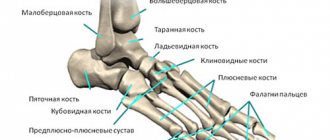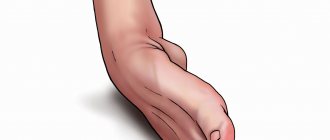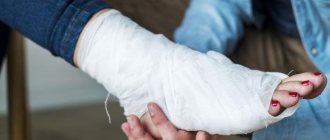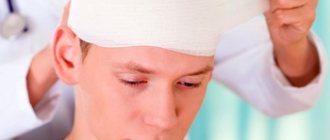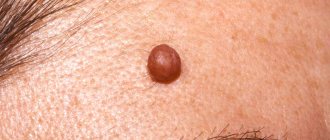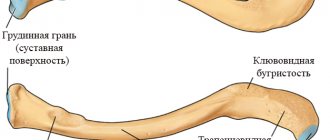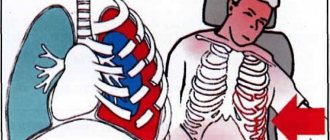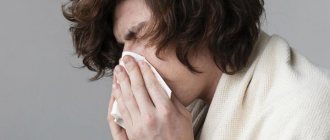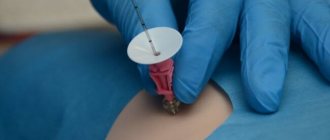What happens when there is a bruise? What are the symptoms and consequences of bruises? What is the most effective way to treat bruises?
A bruise is a closed injury to tissues and organs without significant disruption of their structure. This is the most common type of injury. Bruises the skin. The integrity of the upper layers of the skin is not damaged during a bruise, but a swelling and hematoma (bruise) quickly appear at the site of the impact, and pain is felt.
There are bruises of soft tissues , periosteum, joints, bruises of the neck, back, spine, chest, head. When a joint (for example, a knee) is bruised, its volume increases several hours after the injury, function is impaired, and pain intensifies (especially when moving). In this case, the leg is slightly bent, its extension is sharply painful. The difference between a joint bruise and a dislocation is the preservation of movement in it.
With bruises , there may be only a slight swelling (“bump”), which does not cause much trouble. However, if the injury was accompanied by loss of consciousness, weakness, nausea, vomiting, etc., then this may be a sign of a more serious injury - a concussion or even a brain contusion .
With bruises , in addition to damage to soft tissues, blood flow in the vessels passing here may be secondarily disrupted, which disrupts the blood supply to the brain.
With bruises of the back (spine), the blood circulation of the spinal cord may be impaired (there is a decrease in sensitivity in the limbs, muscle function, etc.).
With bruises of the chest, only local changes in the superficial soft tissues may be noted, but with a strong blow, for example, as a result of a fall, breathing may be impaired, and with blows to the heart area it may stop. Abdominal bruise is sometimes accompanied by damage to internal organs (for example, rupture of the liver, spleen, accompanied by internal bleeding).
What are sprains and bruises?
A bruise is a closed tissue injury, the severity of which depends on the force of the blow and can manifest itself in different ways. Stretching does not lead to disruption of tissue integrity; tendons, muscles and ligaments are usually affected.
Stretching
A sprain is accompanied by swelling, slight hemorrhage, limited mobility and pain at the site of injury. The danger of injury is that the pain intensifies over time. With a moderate degree, several fibers of the ligaments are ruptured; a complete rupture leads to loss of function of the joint.
In case of such damage, it is recommended to follow a home regime for 10 days. It is not necessary to give up physical activity, the main thing is not to put stress on the damaged joint or tendons. If the pain does not subside within a few days, there is a possibility of a fracture or tear of the ligament. An X-ray examination will help establish the final diagnosis.
Degrees of stretching using the example of the ankle joint:
Injury
Signs of a bruise include swelling, redness and increased temperature of the damaged area of the skin, hemorrhage (hematoma), and attacks of pain. As the hematoma grows, the pain may increase so much that it will be difficult to distinguish a bruise from a fracture.
Bruises rarely lead to severe anatomical tissue damage, only in the event of a strong blow. Symptoms may vary depending on the location of the lesion. For example, a bruised rib is accompanied by increased pain when breathing and coughing, high fever and bruising. Injury to the knee joint leads to limitation of motor activity.
Assistance for bruises should be provided as soon as possible after the injury. Damaged skin should be treated with a disinfectant; the affected area should not be massaged. If you have bruises, it is not recommended to play sports; you should also limit your alcohol intake (as alcohol leads to vasodilation).
Children and people of retirement age are at risk, as they have weakened joints and muscle tissue. Treatment of bruises in older people can be a rather lengthy process, so it is impossible to do without the help of specialized devices.
In especially severe cases, surgical treatment may be required, which is aimed at removing fluid from the joints, puncturing the skin, and taking antibiotics.
Bruises: symptoms and consequences. Why is a bruise dangerous?
The main symptoms of a bruise are: pain in the damaged area, hemorrhages as a result of rupture of blood vessels, the formation of hematoma and edema. Very severe pain after a bruise may mean that the bones are damaged. Pain, the first symptom of a bruise , appears immediately at the time of injury and can be significant. Then the pain decreases somewhat or is moderate in nature, and 1-3 hours after the injury it resumes or significantly intensifies. A change in the nature of pain and an increase in their intensity are caused by increased traumatic swelling, hemorrhage or an increase in hematoma.
When is bruised , movements in the joints are initially preserved, but they become impossible as hemorrhage and swelling increase, especially with hemarthrosis. This bruises from fractures and dislocations, in which active and passive movements become impossible immediately after the injury.
The pain is especially sharp when is bruised , for example when the anterior surface of the leg or ulnar nerve is bruised. Due to severe pain, pain shock may occur. Hemorrhages at the site of a bruise can be pinpoint, both in the skin and subcutaneous tissue, in the form of bruises, as well as in the form of significant accumulations of blood in the underlying tissues (hematomas). Bleeding that continues deep into the tissue often leads to additional trauma to adjacent tissues as a result of their compression, which is accompanied by a gradual increase in pain and dysfunction.
The time of bruising depends on the depth of the hemorrhage. When are bruised , it appears immediately, in the first minutes or hours. When a muscle or periosteum is bruised, bruises appear on the 2-3rd day and sometimes far from the site of the bruise. The appearance of late bruises, especially far from the site of injury , is a serious symptom and requires additional examination, for example, x-ray, to exclude a fracture or crack of the bone. The color of the bruise undergoes certain changes due to the breakdown of hemoglobin. A fresh bruise is red, then it turns purple, turns blue, after 5-6 days it turns green and then yellow. The color of the bruise can indicate how long ago the injury was.
Common reasons why you might get a sprain or bruise
- Carelessness when handling heavy objects.
- Getting into a traffic accident.
- Falling while going down the stairs.
- Participating in high-risk sports, such as martial arts, volleyball, powerlifting, basketball, etc.
- Fall due to fainting.
- Living conditions - twisting your feet, stumbling, walking on slippery surfaces or wearing high-heeled shoes.
- Excess weight, uncomfortable shoes, clothes, equipment.
- Arthrosis, infectious diseases, flat feet (these ailments can lead to changes in the structure of the joint).
How to help from within
Help with serious bruises is needed not only externally, but also from the inside. It is not necessary to take medications so as not to put a strain on the liver. There are natural ways to support the body:
- rose hips, currants and citrus fruits are sources of vitamin C to strengthen blood vessels;
- cabbage, spinach - rich in vitamin K, which is necessary for normal blood clotting;
As a pharmacy vitamin, you can take Ascorutin. This is an inexpensive but effective way to strengthen blood vessels
Dear patients! Remember that only a qualified doctor can make an accurate diagnosis, determine the causes and nature of the disease, and prescribe effective treatment. You can make an appointment with our specialists or call a doctor at home by calling 8-(4822)-33-00-33
Be healthy and happy!
Which parts of the body are most susceptible to injury?
Sprains mainly occur in the knee joints or ankles when running or walking on uneven surfaces or ice. Injuries often occur when playing team sports with sudden braking and acceleration. Poor warm-up, lack of regular physical activity, fatigue, and pregnancy increases the likelihood of sprains.
Treatment for a hamstring strain is common for dancers and people involved in active sports. Injury occurs as a result of overexertion and lack of proper rest.
The following parts of the body are primarily susceptible to bruises:
- Chest - often accompanied by damage to internal tissues, so treatment of a chest contusion should begin immediately.
- Knee – if the damage is severe, hemarthrosis may develop.
- Nose – sometimes accompanied by displacement of the nasal septum.
- Shoulder – leads to temporary limitation of mobility.
- Elbow – depending on the nature of the damage, arthrosis or arthritis may develop.
What types of injuries are there and their differences:
Pathogenesis
When a muscle is bruised, damage to the muscle fibers is noted and the tendon may be stretched. Damage to muscles and tendons due to bruises is accompanied by pain and limits people’s activity. Pain syndrome is an adaptive mechanism that develops after tissue damage. Pathogenetically, the appearance of pain is associated with irritation of peripheral nociceptive receptors. At the site of a traumatic lesion, substances are produced that accompany pain and swelling ( serotonin , prostaglandins , histamine , bradykinin and others).
Degree of damage
Soft tissue damage is classified into four grades:
- The first is shallow abrasions and scratches. The pain syndrome completely disappears within 24 hours.
- The second is the formation of a hematoma, swelling, rupture of muscle fibers. Accompanied by sharp pain, which subsequently calms down.
- The third is damage to muscle tissue, tendons, and deformation of skin tissue.
- Fourth – the place of damage loses its functionality, the changes are clearly pronounced. In this case, urgent medical attention is required.
Objectives and types of drugs
Today, you can buy ointment for bruises with different pharmacological effects. But at the same time, all funds are aimed at solving the following problems:
- Dissolution of blood clots in the damaged area.
- Relieving swelling and inflammation.
- Reducing pain.
- Restoration of damaged tissues.
Ointments for bruises can be classified according to their effects as follows:
- Nonsteroidal anti-inflammatory drugs. When used, pain is reduced, swelling is relieved and inflammation is stopped.
- Decongestant and absorbable. With them, it is possible to slow down the development of edema and reduce pain by relaxing the smooth muscles of the blood vessels. In addition, the products help restore venous circulation.
- Cooling. They contain substances that irritate the nerve endings in the damaged area, resulting in a local analgesic effect. Also, such drugs increase blood flow and have anti-inflammatory properties. Against this background, metabolic processes intensify, which accelerates the restoration of damaged tissues.
Manufacturers also produce combination drugs that have the ability to have all of the above effects. This allows you to relieve pain and stop inflammation, which allows you to remove bruises in the shortest possible time.
Providing first aid for bruises and sprains
Providing medical care begins with diagnosis; bruises and sprains are easily determined by visual examination. The doctor probes the damaged area and determines the functionality of the joints and muscles. If internal organs are injured, the patient may be prescribed an MRI, ultrasound, or radiography. The duration of treatment largely depends on the timely provision of first aid.
First aid for sprains
Immediately after the injury, the first signs of a sprain appear - pain and swelling (appear after 2-3 hours). It is necessary to limit movement of the affected area, as activity can aggravate the injury. First aid will prevent the development of the disease and avoid undesirable consequences, so it is important to follow these steps:
- Apply an elastic bandage (this will limit the mobility of the joint).
- Do not heat damaged skin for 48 hours.
- Apply cold to the sprained area (will reduce swelling).
- Elevate the injured area if bruising occurs.
First aid for bruises
First aid is provided to eliminate swelling, pain and prevent the development of a hematoma. To understand how to quickly heal a bruise, you need to study the features of first aid:
- Applying ice - cold has a preventive effect on hematoma. It is recommended to apply ice every 3 hours for 10 minutes.
- Applying a bandage.
- Elevated position of the injured part of the body.
- Do not rub the bruise for 2 days.
- If you experience severe throbbing pain, you should consult a doctor, as damage to internal organs may occur.
If a hand is injured, the affected area is wrapped in a cotton cloth, and if a finger is injured, ice cubes are applied.
Remedies for bruises
Popular and inexpensive pharmaceutical products that will relieve pain and reduce inflammation. Buy them in all LekOptTorg pharmacies and on the website:
- . Used for pain relief in inflammatory diseases of the musculoskeletal system. Tablets are contraindicated in the 3rd trimester of pregnancy. Diclofen is used with extreme caution for diseases of the liver, kidneys, asthma, heart failure, and also in old age. The maximum dose of 150 mg should not be used for more than 5–7 days. For detailed instructions for use, please see the product card on our website.
- . Helps relieve pain and reduce fever (temperature). It is used for traumatic inflammation of the musculoskeletal system and soft tissues. Do not take during pregnancy or breastfeeding. For detailed instructions for use, please see the product card on our website.
- . Unlike other drugs, it does not relieve inflammation, but only relieves pain. But most often, paracetamol is in every first aid kit. Tablets are not recommended to be taken on an empty stomach, as well as in case of liver and kidney failure. Detailed instructions for use can be found on our website in the product card.
Treatment of sprains and bruises with the “Sun” device
The AMnp-02 “Sun” device is suitable for treating sprains of the knee joint, ankle and other parts of the body. It has universal healing properties. AMnp-02 uses the method of low-frequency magnetic therapy, which is easily tolerated and can be used for the elderly and children aged 3 years and older.
The device is compact and mobile, with virtually no contraindications. The device is indicated not only for bruises and sprains, but also for arthritis, arthrosis of large joints, lymphostasis (formed when bones are broken), and osteochondrosis of the spine. Ultraviolet irradiators have, among other things, a bactericidal effect, which helps in the treatment of skin diseases associated with a bruise.
The device is sold together with a fixation belt, a cable and a power supply, and a magnetic field indicator. Designed to last for 8-10 years, weighs less than 1kg, making it easy to carry.
Results and discussion
The average age of the patients was 44.7 years. The ratio of men to women was 1:1.
As can be seen in Figure 1, with bruises of the upper limb, ketoprofen tablets began to show its activity already at the 10th minute, with bruises of the lower limb - somewhat later, at the 20th minute. The use of the injection form (Fig. 2) provided a pronounced analgesic effect already at the 5th minute. Both tablet and injection forms of ketoprofen demonstrated an advantage over diclofenac. By 3–4 days, in all cases it was possible to achieve complete pain relief. The duration of the analgesic effect of the drugs was not studied due to the large psycho-emotional component and the small sample of patients. A peculiarity of the assessment of pain syndrome at the initial visit was that patients with a shoulder injury rated pain 2–3 points higher than patients with a hip injury (6–8 points).
I would like to note that, despite the effectiveness of the injection form of the drug, the tablet form remained the form of choice for patients with arm injuries, according to the survey. In patients with leg injuries, the injection form was preferred. Here we have to state a paradox: with a more severe pain syndrome due to a bruise of the upper limb, a more effective injection form is used much less frequently than in patients with damage to the lower limb.
